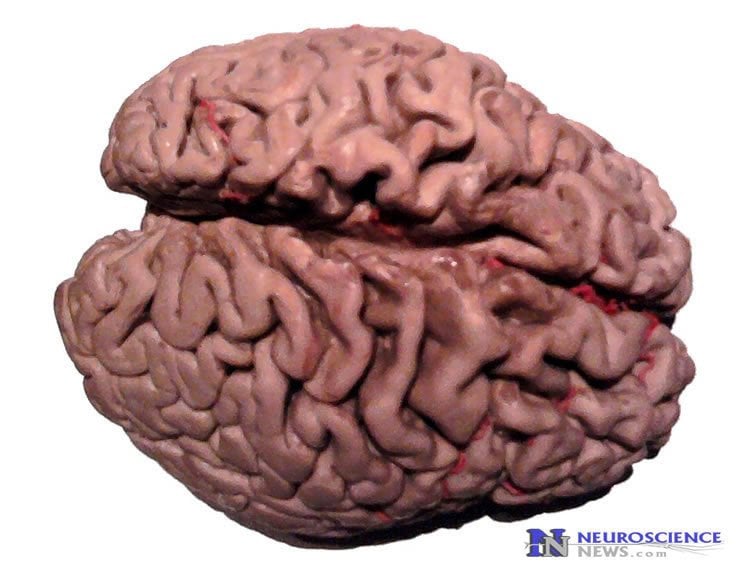Summary: Researchers present a new model for the biology of Alzheimer’s disease in a Nature Neuroscience study. They note the findings could help lead to a new approach to treating the neurodegenerative disease.
Source: Boston University School of Medicine.
In a new study, researchers from Boston University School of Medicine (BUSM) describe a unique model for the biology of Alzheimer’s disease (AD) which may lead to an entirely novel approach for treating the disease. The findings appear in the journal Nature Neuroscience.
AD is a major cause of disease in the elderly and places a huge financial cost on the health care system. Scientists have known for a long time that two proteins (beta-amyloid and tau) clump and accumulate in the brains of Alzheimer patients, and this accumulation is thought to cause nerve cell injury that results in dementia.
Recent work by these BUSM researchers has shown that the clumping and accumulation of tau occurs as a normal response to stress, producing RNA/protein complexes termed “stress granules,” which reflect the need for the brain to produce protective proteins. The persistence of this “stress response” leads to excessive stress, the accumulation of pathological stress granules, and the accumulation of clumped tau, which drives nerve cell injury and produces dementia.
In the current study, the researchers use this new model and show that reducing the level of stress granule proteins yields strong protection, possibly by reducing persistent pathological stress granules as well as changing the type of tau clumping that occurs.
The team hypothesized that they could delay the disease process by reducing stress granules and decreasing this persistent stress response by genetically decreasing TIA1, which is a protein that is required for stress granule formation. Reducing TIA1 improved nerve cell health and produced striking improvements in memory and life expectancy in an experimental model of AD.

Although the experimental models had better memory and longer lives, the team observed more clumped tau in the form of neurofibrillary tangles. To explain how this might be associated with a better outcome, the researchers looked at the type of tau pathology and showed that reducing TIA1 dramatically lowered the amount of tiny clumps, which are termed tau oligomers and are particularly toxic. “Reducing TIA1 shifted tau accumulation from small to large clumps, decreasing the amount of small tau clumps and producing a proportional increase in the large tau clumps that generate neurofibrillary tangles and are less toxic,” said corresponding author Benjamin Wolozin, MD, PhD, professor of pharmacology & experimental therapeutics at BUSM.
“This ability of TIA1 reduction to provide protection opens up a new chapter in our understanding of the biology of Alzheimer’s disease and also suggests new avenues for pharmacotherapy for this disease and other tauopathies,” said Wolozin.
Funding: Funding for this study was provided by the National Institutes of Health (AG050471, NS089544, ES020395, R01 AG054199), BrightFocus Foundation; the Alzheimer Association; Cure Alzheimer’s Fund and the Thome Medical Foundation; the UGC-Raman Fellowship; The Government of India and the Paul F. Glenn Foundation.
Benjamin Wolozin is Co-Founder and Chief Scientific Officer for Aquinnah Pharmaceuticals Inc.
Source: Gina DiGravio – Boston University School of Medicine
Publisher: Organized by NeuroscienceNews.com.
Image Source: NeuroscienceNews.com image is in the public domain.
Original Research: Abstract for “Reducing the RNA binding protein TIA1 protects against tau-mediated neurodegeneration in vivo” by Daniel J. Apicco, Peter E. A. Ash, Brandon Maziuk, Chelsey LeBlang, Maria Medalla, Ali Al Abdullatif, Antonio Ferragud, Emily Botelho, Heather I. Ballance, Uma Dhawan, Samantha Boudeau, Anna Lourdes Cruz, Daniel Kashy, Aria Wong, Lisa R. Goldberg, Neema Yazdani, Cheng Zhang, Choong Y. Ung, Yorghos Tripodis, Nicholas M. Kanaan, Tsuneya Ikezu, Pietro Cottone, John Leszyk, Hu Li, Jennifer Luebke, Camron D. Bryant & Benjamin Wolozin in Nature Neuroscience. Published online November 20 2017 doi:10.1038/s41593-017-0022-z
[cbtabs][cbtab title=”MLA”]Boston University School of Medicine “Researchers Describe a New Biology of Alzheimer’s Disease.” NeuroscienceNews. NeuroscienceNews, 20 November 2017.
<https://neurosciencenews.com/alzheiemrs-neurobiology-7986/>.[/cbtab][cbtab title=”APA”]Boston University School of Medicine (2017, November 20). Researchers Describe a New Biology of Alzheimer’s Disease. NeuroscienceNews. Retrieved November 20, 2017 from https://neurosciencenews.com/alzheiemrs-neurobiology-7986/[/cbtab][cbtab title=”Chicago”]Boston University School of Medicine “Researchers Describe a New Biology of Alzheimer’s Disease.” https://neurosciencenews.com/alzheiemrs-neurobiology-7986/ (accessed November 20, 2017).[/cbtab][/cbtabs]
Abstract
Reducing the RNA binding protein TIA1 protects against tau-mediated neurodegeneration in vivo
Emerging studies suggest a role for tau in regulating the biology of RNA binding proteins (RBPs). We now show that reducing the RBP T-cell intracellular antigen 1 (TIA1) in vivo protects against neurodegeneration and prolongs survival in transgenic P301S Tau mice. Biochemical fractionation shows co-enrichment and co-localization of tau oligomers and RBPs in transgenic P301S Tau mice. Reducing TIA1 decreased the number and size of granules co-localizing with stress granule markers. Decreasing TIA1 also inhibited the accumulation of tau oligomers at the expense of increasing neurofibrillary tangles. Despite the increase in neurofibrillary tangles, TIA1 reduction increased neuronal survival and rescued behavioral deficits and lifespan. These data provide in vivo evidence that TIA1 plays a key role in mediating toxicity and further suggest that RBPs direct the pathway of tau aggregation and the resulting neurodegeneration. We propose a model in which dysfunction of the translational stress response leads to tau-mediated pathology.
“Reducing the RNA binding protein TIA1 protects against tau-mediated neurodegeneration in vivo” by Daniel J. Apicco, Peter E. A. Ash, Brandon Maziuk, Chelsey LeBlang, Maria Medalla, Ali Al Abdullatif, Antonio Ferragud, Emily Botelho, Heather I. Ballance, Uma Dhawan, Samantha Boudeau, Anna Lourdes Cruz, Daniel Kashy, Aria Wong, Lisa R. Goldberg, Neema Yazdani, Cheng Zhang, Choong Y. Ung, Yorghos Tripodis, Nicholas M. Kanaan, Tsuneya Ikezu, Pietro Cottone, John Leszyk, Hu Li, Jennifer Luebke, Camron D. Bryant & Benjamin Wolozin in Nature Neuroscience. Published online November 20 2017 doi:10.1038/s41593-017-0022-z







